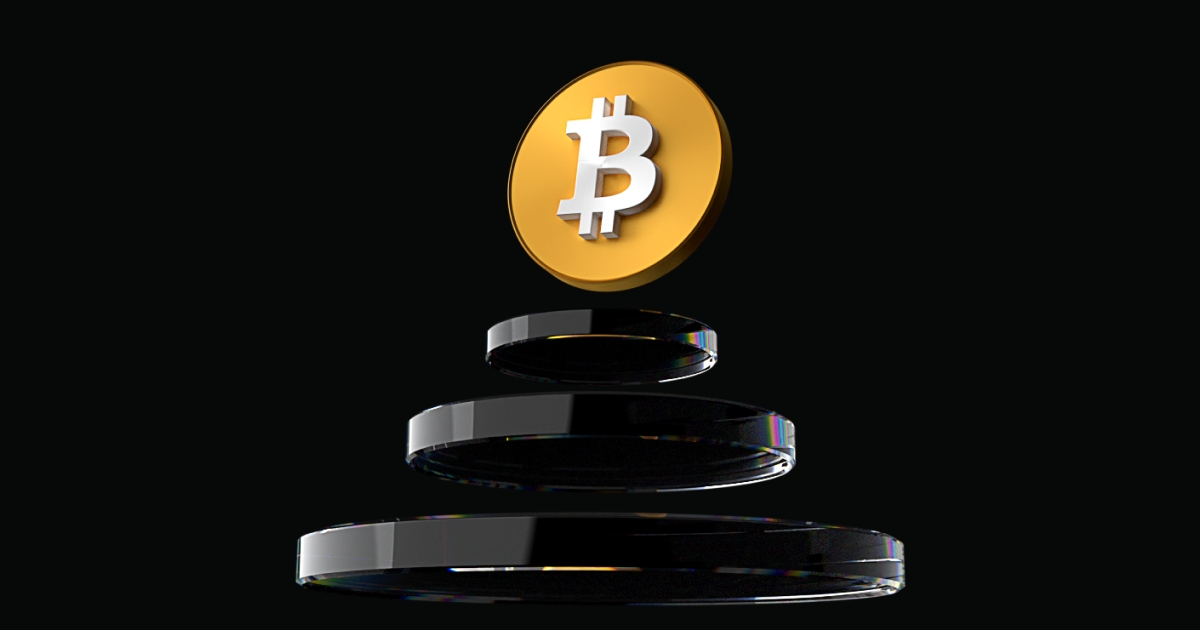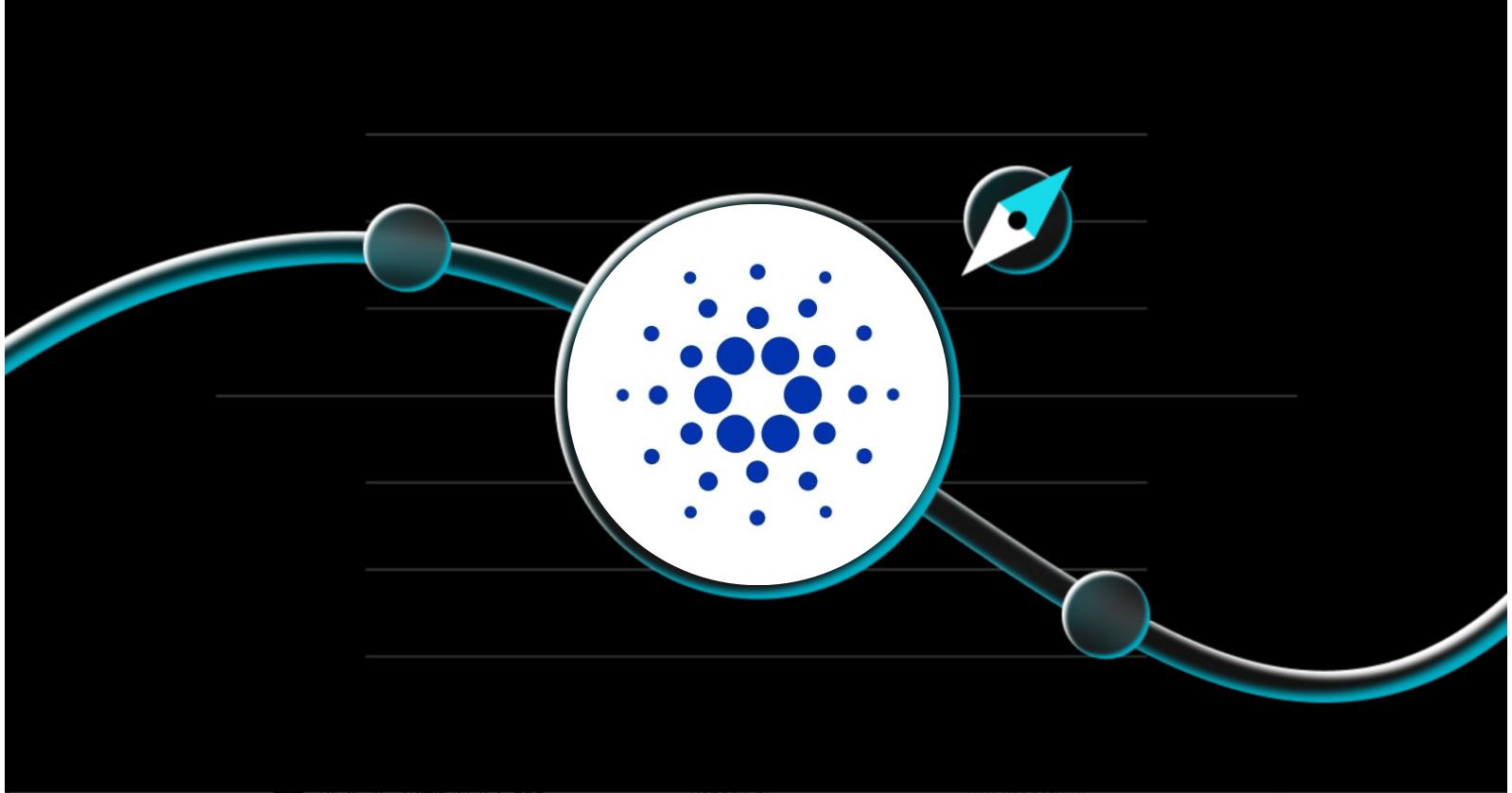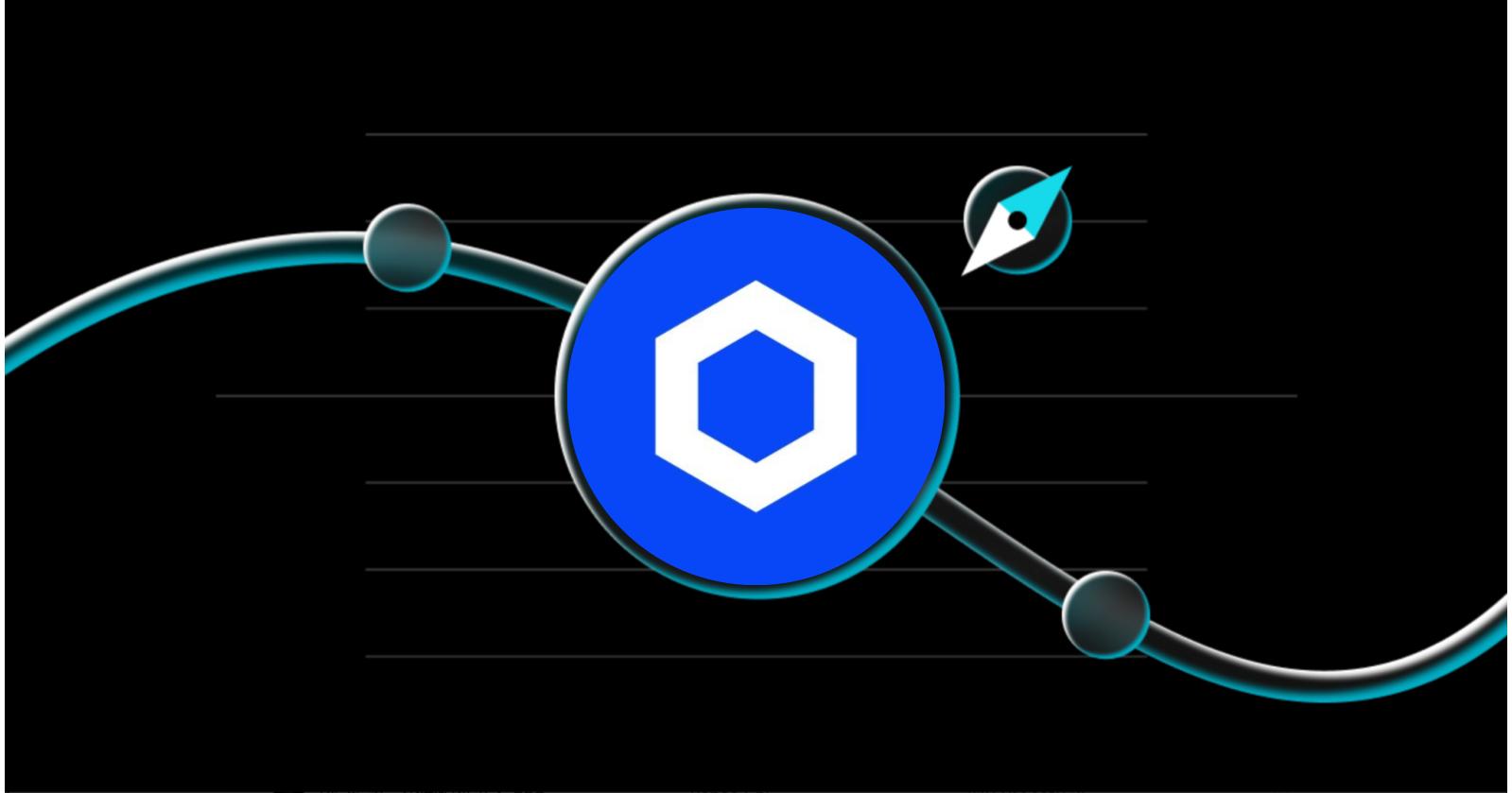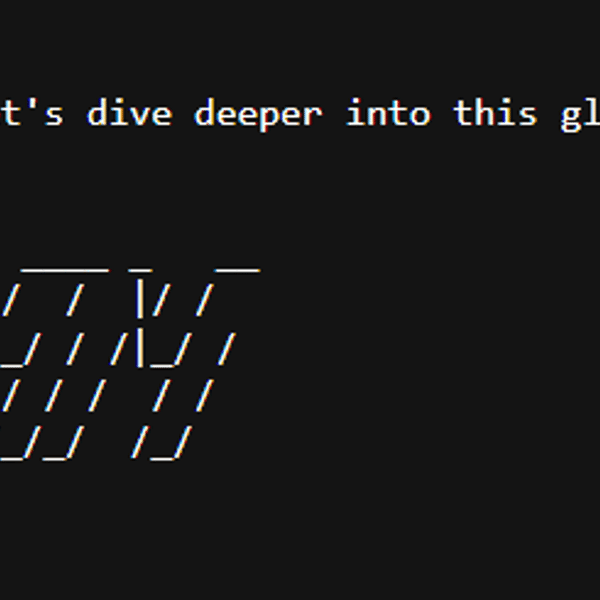Bitget: #4 al mondo per volume di trading giornaliero!
Quota di mercato di BTC58.51%
Commissioni sul gas di ETH ora: 0.1-1 gwei
Bitcoin Rainbow Chart: Accumula
BTC/USDT$86311.65 (-2.14%)Indice Paura & Avidità16(Paura estrema)
Indice Altcoin Season:0(Stagione di Bitcoin)
Flusso netto totale di ETF Spot su Bitcoin +$75.4M (1G); -$1.66B (7G).Pacchetto regalo di benvenuto per i nuovi utenti del valore di 6.200 USDT.Riscatta
Fai trading sempre e ovunque con l'app Bitget.Scarica ora
Bitget: #4 al mondo per volume di trading giornaliero!
Quota di mercato di BTC58.51%
Commissioni sul gas di ETH ora: 0.1-1 gwei
Bitcoin Rainbow Chart: Accumula
BTC/USDT$86311.65 (-2.14%)Indice Paura & Avidità16(Paura estrema)
Indice Altcoin Season:0(Stagione di Bitcoin)
Flusso netto totale di ETF Spot su Bitcoin +$75.4M (1G); -$1.66B (7G).Pacchetto regalo di benvenuto per i nuovi utenti del valore di 6.200 USDT.Riscatta
Fai trading sempre e ovunque con l'app Bitget.Scarica ora
Bitget: #4 al mondo per volume di trading giornaliero!
Quota di mercato di BTC58.51%
Commissioni sul gas di ETH ora: 0.1-1 gwei
Bitcoin Rainbow Chart: Accumula
BTC/USDT$86311.65 (-2.14%)Indice Paura & Avidità16(Paura estrema)
Indice Altcoin Season:0(Stagione di Bitcoin)
Flusso netto totale di ETF Spot su Bitcoin +$75.4M (1G); -$1.66B (7G).Pacchetto regalo di benvenuto per i nuovi utenti del valore di 6.200 USDT.Riscatta
Fai trading sempre e ovunque con l'app Bitget.Scarica ora


Previsione del prezzo di Hyper Bot (BOT)
Non listato
Quanto potrebbe valere Hyper Bot nel 2025, 2026, 2030 e oltre? Qual è il prezzo previsto di Hyper Bot per domani, questa settimana o questo mese? E quale ritorno sugli investimenti potresti ottenere facendo holding di Hyper Bot fino al 2050?
Questa pagina offre strumenti di previsione del prezzo di Hyper Bot a breve e lungo termine, per aiutarti a valutare la futura performance del prezzo di Hyper Bot. Puoi anche impostare le tue previsioni per stimare il valore futuro di Hyper Bot.
È importante sottolineare che, data l'intrinseca volatilità e complessità del mercato delle criptovalute, queste previsioni, pur offrendo indicazioni sui potenziali scenari e intervalli di prezzo, devono essere considerate con cautela e scetticismo.
Questa pagina offre strumenti di previsione del prezzo di Hyper Bot a breve e lungo termine, per aiutarti a valutare la futura performance del prezzo di Hyper Bot. Puoi anche impostare le tue previsioni per stimare il valore futuro di Hyper Bot.
È importante sottolineare che, data l'intrinseca volatilità e complessità del mercato delle criptovalute, queste previsioni, pur offrendo indicazioni sui potenziali scenari e intervalli di prezzo, devono essere considerate con cautela e scetticismo.
Grafico di previsione del prezzo di Hyper Bot per il 2025 e oltre
Previsione del prezzo di Hyper Bot nei prossimi 10 giorni sulla base di un tasso di crescita giornaliero previsto del +0.014%.
Prezzo di oggi (Dec 15, 2025)
$0.0005064
Prezzo di domani (Dec 16, 2025)
$0.0005064
Prezzo in 5 giorni (Dec 20, 2025)
$0.0005067
Prezzo di questo mese (Dec 2025)
$0.0005071
Prezzo del mese prossimo (Jan 2026)
$0.0005093
Prezzo in 5 mesi (May 2026)
$0.0005179
Prezzo nel 2025
$0.0005188
Prezzo nel 2026
$0.0005447
Prezzo nel 2030
$0.0006621
Secondo le previsioni giornaliere a breve termine di Hyper Bot, il prezzo di Hyper Bot dovrebbe risultare $0.0005064 in data Dec 15, 2025, $0.0005064 in data Dec 16, 2025 e $0.0005067 in data Dec 20, 2025. Secondo le previsioni mensili di Hyper Bot, il prezzo di Hyper Bot dovrebbe risultare $0.0005071 a Dec 2025, $0.0005093 a Jan 2026 e $0.0005179 a May 2026. Secondo le previsioni annuali a lungo termine di Hyper Bot, il prezzo di Hyper Bot dovrebbe risultare $0.0005188 nel 2025, $0.0005447 nel 2026 e $0.0006621 nel 2030.
Previsione del prezzo di Hyper Bot per oggi
Il prezzo attuale di Hyper Bot (BOT) è $0.0005061, con una variazione del prezzo in 24 ore di 0.00%. Il prezzo di Hyper Bot (BOT) dovrebbe raggiungere $0.0005064 oggi. Scopri di più su Prezzo di Hyper Bot di oggi.
Previsione del prezzo di Hyper Bot per Dec 2025
Il prezzo di Hyper Bot (BOT) dovrebbe variare del Infinity% a Dec 2025, e il prezzo di Hyper Bot (BOT) dovrebbe raggiungere $0.0005071 entro la fine di Dec 2025.
Previsione del prezzo di Hyper Bot per il 2025
Il prezzo di Hyper Bot (BOT) dovrebbe variare del Infinity% nel 2025, e il prezzo di Hyper Bot (BOT) raggiungerà $0.0005188 entro la fine del 2025.
Previsione del prezzo di Hyper Bot a lungo termine: 2026, 2030, 2035, 2040, 2050
Quello che segue è un modello di previsione del prezzo di Hyper Bot basato su un tasso di crescita fisso. Il quale ignora l'impatto delle fluttuazioni del mercato, dei fattori economici esterni o delle emergenze, concentrandosi invece sull'andamento medio dei prezzi di Hyper Bot. Aiuta gli investitori ad analizzare e calcolare rapidamente il potenziale di profitto derivante dall'investimento in Hyper Bot.
Inserisci il tasso di crescita annuale previsto per il prezzo di Hyper Bot e scopri come cambierà il valore di Hyper Bot in futuro.
Inserisci il tasso di crescita annuale previsto per il prezzo di Hyper Bot e scopri come cambierà il valore di Hyper Bot in futuro.
Previsione del prezzo annuale di Hyper Bot basata sul tasso di crescita annuale previsto di 5%
%
Crescita annuale prevista. Inserisci una percentuale compresa tra -100% e +1000%.
| Anno | Prezzo previsto | ROI totale |
|---|---|---|
2026 | $0.0005447 | +5.00% |
2027 | $0.0005720 | +10.25% |
2028 | $0.0006006 | +15.76% |
2029 | $0.0006306 | +21.55% |
2030 | $0.0006621 | +27.63% |
2035 | $0.0008451 | +62.89% |
2040 | $0.001079 | +107.89% |
2050 | $0.001757 | +238.64% |
Sulla base di un tasso di crescita annuale di 5%, il prezzo di Hyper Bot (BOT) dovrebbe raggiungere $0.0005447 nel 2026, $0.0006621 nel 2030,$0.001079 nel 2040 e $0.001757 nel 2050.
Previsione del prezzo di Hyper Bot per il 2026
Nel 2026, sulla base di un tasso di crescita annuale di 5%, il prezzo di Hyper Bot (BOT) dovrebbe raggiungere $0.0005447. Sulla base di questa previsione, il ritorno sugli investimenti cumulativo derivante dall’holding di Hyper Bot fino alla fine del 2026 sarebbe 5.00%.
Previsione del prezzo di Hyper Bot per il 2030
Nel 2030, sulla base di un tasso di crescita annuale di 5%, il prezzo di Hyper Bot (BOT) dovrebbe raggiungere $0.0006621. Sulla base di questa previsione, il ritorno sugli investimenti cumulativo derivante dall’holding di Hyper Bot fino alla fine del 2030 sarebbe 27.63%.
Previsione del prezzo di Hyper Bot per il 2035
Nel 2035, sulla base di un tasso di crescita annuale di 5%, il prezzo di Hyper Bot (BOT) dovrebbe raggiungere $0.0008451. Sulla base di questa previsione, il ritorno sugli investimenti cumulativo derivante dall’holding di Hyper Bot fino alla fine del 2035 sarebbe 62.89%.
Previsione del prezzo di Hyper Bot per il 2040
Nel 2040, sulla base di un tasso di crescita annuale di 5%, il prezzo di Hyper Bot (BOT) dovrebbe raggiungere $0.001079. Sulla base di questa previsione, il ritorno sugli investimenti cumulativo derivante dall’holding di Hyper Bot fino alla fine del 2040 sarebbe 107.89%.
Previsione del prezzo di Hyper Bot per il 2050
Nel 2050, sulla base di un tasso di crescita annuale di 5%, il prezzo di Hyper Bot (BOT) dovrebbe raggiungere $0.001757. Sulla base di questa previsione, il ritorno sugli investimenti cumulativo derivante dall’holding di Hyper Bot fino alla fine del 2050 sarebbe 238.64%.
Quanto guadagnerai con i tuoi Hyper Bot?
Se investi $100 in Hyper Bot quest'anno e holdi fino al 2026, la previsione del prezzo indica un potenziale profitto di $5, con un ROI di 5.00%. (Le commissioni non sono incluse in questa stima).
Esclusione di responsabilità: questo non è un consiglio di investimento. Le informazioni fornite sono solo a scopo informativo generale. Nessuna informazione, materiale, servizio o altro contenuto fornito in questa pagina costituisce una sollecitazione, raccomandazione, approvazione o qualsiasi tipo di consulenza finanziaria, di investimento o di altro tipo. Prima di prendere qualsiasi decisione d'investimento, è importante richiedere un parere professionale indipendente sotto forma di consulenza legale, finanziaria e fiscale.
Tabella delle previsioni del prezzo di Hyper Bot a breve termine
Previsione giornaliera del prezzo di Hyper Bot basata sulla crescita giornaliera prevista di 0.014%.
Qual è la previsione del prezzo di Hyper Bot per domani, tra 5 giorni, tra 10 giorni e oltre?%
Crescita giornaliera prevista. Inserisci una percentuale compresa tra -100% e +1000%.
| Data | Prezzo previsto | ROI totale |
|---|---|---|
Dec 16, 2025 (Domani) | $0.0005064 | +0.01% |
Dec 17, 2025 | $0.0005065 | +0.03% |
Dec 18, 2025 | $0.0005066 | +0.04% |
Dec 19, 2025 | $0.0005066 | +0.06% |
Dec 20, 2025 (5 giorni dopo) | $0.0005067 | +0.07% |
Dec 21, 2025 | $0.0005068 | +0.08% |
Dec 22, 2025 | $0.0005069 | +0.10% |
Dec 23, 2025 | $0.0005069 | +0.11% |
Dec 24, 2025 | $0.0005070 | +0.13% |
Dec 25, 2025 (10 giorni dopo) | $0.0005071 | +0.14% |
Sulla base di un tasso di crescita giornaliero di 0.014%, si prevede che il prezzo di Hyper Bot (BOT) raggiunga $0.0005064 in data Dec 16, 2025, $0.0005067 Dec 20, 2025 e $0.0005071 Dec 25, 2025.
Previsione del prezzo di Hyper Bot per il Dec 16, 2025
Sulla base del tasso di crescita giornaliero di 0.014% per la previsione del prezzo di Hyper Bot, il valore stimato di 1 Hyper Bot sarà $0.0005064 in data Dec 16, 2025 (Domani). Il ROI previsto dall'investimento e dall'holding di Hyper Bot fino alla fine del giorno Dec 16, 2025 è di 0.01%.
Previsione del prezzo di Hyper Bot per il Dec 20, 2025
Sulla base del tasso di crescita giornaliero di 0.014% per la previsione del prezzo di Hyper Bot, il valore stimato di 1 Hyper Bot sarà $0.0005067 in data Dec 20, 2025 (5 giorni dopo). Il ROI previsto dall'investimento e dall'holding di Hyper Bot fino alla fine del giorno Dec 20, 2025 è di 0.07%.
Previsione del prezzo di Hyper Bot per il Dec 25, 2025
Sulla base del tasso di crescita giornaliero di 0.014% per la previsione del prezzo di Hyper Bot, il valore stimato di 1 Hyper Bot sarà $0.0005071 in data Dec 25, 2025 (10 giorni dopo). Il ROI previsto dall'investimento e dall'holding di Hyper Bot fino alla fine del giorno Dec 25, 2025 è di 0.14%.
Previsione mensile del prezzo di Hyper Bot basata sulla crescita mensile prevista di 0.42%.
Qual è la previsione del prezzo di Hyper Bot per il prossimo mese, i prossimi 5 mesi, i prossimi 10 mesi e oltre?%
Crescita mensile prevista. Inserisci una percentuale compresa tra -100% e +1000%.
| Data | Prezzo previsto | ROI totale |
|---|---|---|
Jan 2026 (Il mese prossimo) | $0.0005093 | +0.42% |
Feb 2026 | $0.0005114 | +0.84% |
Mar 2026 | $0.0005136 | +1.27% |
Apr 2026 | $0.0005157 | +1.69% |
May 2026 (5 mesi dopo) | $0.0005179 | +2.12% |
Jun 2026 | $0.0005201 | +2.55% |
Jul 2026 | $0.0005222 | +2.98% |
Aug 2026 | $0.0005244 | +3.41% |
Sep 2026 | $0.0005266 | +3.84% |
Oct 2026 (10 mesi dopo) | $0.0005289 | +4.28% |
Sulla base di un tasso di crescita mensile di 0.42%, si prevede che il prezzo di Hyper Bot (BOT) raggiunga $0.0005093 nel mese di Jan 2026, $0.0005179 nel mese di May 2026 e $0.0005289 nel mese di Oct 2026.
Previsione del prezzo di Hyper Bot per il Jan 2026
Sulla base di un tasso di crescita mensile di 0.42%, il prezzo previsto di Hyper Bot (BOT) nel mese di Jan 2026 (Il mese prossimo) è di $0.0005093. Il ROI previsto dall'investimento e dall'holding di Hyper Bot fino alla fine del giorno Jan 2026 è di 0.42%.
Previsione del prezzo di Hyper Bot per il May 2026
Sulla base di un tasso di crescita mensile di 0.42%, il prezzo previsto di Hyper Bot (BOT) nel mese di May 2026 (5 mesi dopo) è di $0.0005179. Il ROI previsto dall'investimento e dall'holding di Hyper Bot fino alla fine del giorno May 2026 è di 2.12%.
Previsione del prezzo di Hyper Bot per il Oct 2026
Sulla base di un tasso di crescita mensile di 0.42%, il prezzo previsto di Hyper Bot (BOT) nel mese di Oct 2026 (10 mesi dopo) è di $0.0005289. Il ROI previsto dall'investimento e dall'holding di Hyper Bot fino alla fine del giorno Oct 2026 è di 4.28%.
Articoli di tendenza sulle previsioni dei prezzi delle criptovalute

Micron Stock Price Prediction 2025: Is the AI Supercycle and $9.6B Japan Investment Driving MU to $338?
Micron Technology (NASDAQ: MU), a global leader in memory and storage solutions, has become one of the most closely watched stocks in the semiconductor sector amid the boom in AI and data center investment. Over the past six months, Micron’s stock has experienced a dramatic surge, followed by significant strategic announcements that underline its shifting priorities toward high-value AI infrastructure. Below, we break down Micron's latest developments, analyze its recent stock performance, and examine future price projections in context.
Source: Google Finance
Micron’s Strategic Transformation: From Consumer Storage to AI Memory
Exit from Consumer-Grade Storage
In December 2025, Micron announced it would exit the consumer-grade storage market, discontinuing its well-known Crucial brand products by February 2026. This move is significant: Crucial has been a mainstay for PC upgraders and DIY enthusiasts for nearly three decades, supplying SSDs and DRAM to retail and direct customers. However, with AI-driven data centers now demanding vast quantities of cutting-edge memory, Micron’s resources are being redirected into supplying enterprise and hyperscale customers.
The decision is catalyzed by surging demand for advanced memory chips, particularly High Bandwidth Memory (HBM), an essential component in powering next-generation AI infrastructure. As the company’s Chief Business Officer cited, Micron is prioritizing large-scale, strategic customers amid unprecedented pressure to supply the growing AI market.
This shift not only signals a new era for Micron but is set to leave a large gap in the consumer market, as the company's 13% share in NAND used for SSDs and its status as the world’s third-largest DRAM supplier will no longer serve everyday PC buyers.
$9.6 Billion Bet on Japanese HBM Production
Micron’s pivot toward AI infrastructure is backed by heavy investments. In late November 2025, the company announced a $9.6 billion investment to construct a new HBM manufacturing plant in Hiroshima, Japan. This initiative, supported by substantial subsidies from the Japanese government, is Micron’s response to the escalating need for HBM chips in AI applications. The move underscores how governments and industry leaders see memory as a national strategic asset and how relentless AI and cloud growth continue to expand the profit pool for companies capable of delivering advanced memory solutions at scale.
Micron’s Recent Financial Performance: Surging Growth Amid AI Supercycle
Six-Month Stock Surge
Micron’s aggressive pivot to AI memory has not gone unnoticed by investors. In September 2025, the stock skyrocketed by nearly 40%, fueled by optimism around AI demand and a wave of positive analyst forecasts. This rally was part of a larger trend across storage companies, as names like Seagate and Western Digital also rode the “AI supercycle.”
For context, Micron closed at $234.16 on December 4, 2025, which represents a remarkable gain from just six months earlier. At its peak in late September, MU notched its highest monthly surge in over a decade. However, this exuberant run also places the spotlight on Micron’s ability to continue meeting or exceeding market expectations, especially as memory and storage markets remain vehemently cyclical.
Financial Highlights and Multiples
Micron’s fiscal year 2025 results were emphatic:
Revenue: $37.38 billion, up nearly 49% from the prior year.
Net Income: $8.54 billion, a jaw-dropping 997% increase year-over-year.
Despite this performance, Micron’s share price was still seen as relatively affordable. Its price-to-earnings ratio stands at around 12x forward earnings, markedly lower than the ~26x PE for the Philadelphia Semiconductor Index or Nvidia’s 32x. This “cheap” valuation reflects both market optimism and lingering doubts about the long-term sustainability of current growth rates, given the sector's notorious boom-and-bust tendencies.
Earnings Momentum and Guidance
Analysts expect Micron to deliver strong guidance in its upcoming earnings. Consensus estimates for Micron’s current year EPS and revenue continue to climb, and the company has already issued upward revisions citing improved DRAM pricing. Wall Street now expects Micron’s EPS to reach $7.42 and revenue to hit $37 billion for the full year.
Recent Announcements Affecting MU Stock
US ‘Chips for Equity’ Policy
Micron is also at the center of broader geopolitical strategies. The U.S. government recently voiced interest in exchanging semiconductor subsidies for equity stakes in leading chipmakers, including Micron. If implemented, this could make the government a significant shareholder in the world’s memory giants (Micron, Samsung, TSMC), further entangling the company in the global race for semiconductor dominance.
What’s Driving the Micron Rally? The AI Memory Supercycle
The underlying force behind Micron’s explosive rally is the global shift toward AI-powered applications, notably in hyperscale data centers. Companies like Nvidia, Google, and AMD require enormous amounts of advanced (and often scarce) memory to train and deploy large language models and generative AI solutions. New flagship chips from Nvidia (GB200), Google (Ironwood TPU), and AMD (MI350) all require hundreds of gigabytes of HBM per processor, a volume far surpassing what’s needed in traditional consumer PCs.
Micron’s strategic repositioning, capacity expansions (especially with HBM), and favorable pricing environment for DRAM and NAND coincide to create what analysts now call the “AI memory supercycle.” Demand so persistently outpaces supply that some investment houses have set bullish price targets between $300–$338 (TS2 Tech, December 2025), contingent on Micron’s ability to scale production and sustain pricing power.
Key Risks: Cyclicality and Market Volatility
Notwithstanding this AI-driven optimism, investors must remember that memory is fundamentally a cyclical industry. Market upswings are often followed by swift downturns. The current cycle could be prolonged and amplified by AI, but it is not immune to global macro slowdowns, new entrants, or sharp corrections in tech spending. Some on Wall Street caution against over-reliance on simple PE multiples to value Micron, suggesting that price-to-book or other metrics may better capture the risks of over-optimism at the cycle’s peak.
Analyst Outlook and Price Forecast
The consensus view remains bullish but measured:
Short-term: Investors await Micron’s next set of earnings and forward guidance, which are expected to set the tone for the stock through 2026.
12-month price targets: Recent upgrades peg MU’s potential between $300–$338, provided AI spending remains strong and Micron executes on its capacity and technology roadmaps.
Risks: Persistent supply chain constraints or an unexpected slowdown in AI or cloud spending could trigger sharper-than-expected corrections, particularly if DRAM/NAND pricing falters.
Conclusion: A Pivotal Moment for Micron Stock
Micron is at a strategic crossroads. Its exit from consumer memory, record-setting investments in AI-dedicated HBM production, and enormous revenue gains position it at the forefront of the AI supercycle. Nevertheless, the cyclical nature of the industry means investors should monitor not only Micron’s execution and earnings but also broader technology and geopolitical trends.
Disclaimer: The opinions expressed in this article are for informational purposes only. This article does not constitute an endorsement of any of the products and services discussed or investment, financial, or trading advice. Qualified professionals should be consulted prior to making financial decisions.
Bitget Academy2025-12-04 12:01

CAPR Stock Price Prediction: Can the 5x Surge Last? Full Analysis of CAPR Stock's Recent Rally, FDA Path, and 2026 Outlook
After a stunning 500% rally in a single session, investors are asking: Is the CAPR Stock Price Surge Sustainable? Capricor Therapeutics (NASDAQ: CAPR)—commonly referred to as CAPR stock—has become a breakout story in the biotech and finance markets, fueled by dramatic news around its Duchenne muscular dystrophy (DMD) therapy, deramiocel. As the CAPR stock price soars to new highs, both experienced and new traders are eager for clear insights into what sparked this move and what may come next.
This guide delivers a deep, SEO-focused look at CAPR stock price, the events fueling CAPR stock’s recent performance, the FDA regulatory journey, financial health, projections for 2026, professional analyst ratings, detailed future predictions, and practical takeaways for investors navigating such volatile terrain.
Source: Google Finance
What Drove the 500% Explosion in CAPR Stock Price?
The main catalyst behind the incredible CAPR stock price rally was Capricor’s announcement of positive topline results from its pivotal Phase 3 HOPE-3 trial for deramiocel, targeting DMD-related cardiomyopathy. Following this update, the CAPR stock price leapt from $6.36 to as high as $40, with intraday gains surpassing 500% and closing near $30—levels not seen in over eight years.
Trading volume for CAPR stock hit 40 million shares, a dramatic spike from its typical daily average. Reuters reported that the company’s market value ballooned by nearly $950 million at the peak, with a record-breaking short squeeze as approximately 14 million shares (over 34% of float) had been sold short prior to the news. The result: a textbook case of both fundamental buying and forced covering driving the CAPR stock price.
The HOPE-3 Milestone: Why This Data Matters for CAPR Stock Price
The pivotal HOPE-3 trial was a randomized, double-blind study enrolling 106 DMD patients at 20 U.S. sites. Participants received intravenous deramiocel or placebo every three months for a year, with most already on standard heart medications. The primary endpoint, based on the Performance of Upper Limb (PUL v2.0) scale, demonstrated a 54% slowing of function decline compared to placebo. The secondary endpoint, cardiac MRI (LVEF), showed a 91% reduction in heart function deterioration (both statistically significant).
For the CAPR stock price, these results delivered exactly what the FDA had asked for: robust, controlled efficacy data, with no new safety signals. Clinicians and analysts called these numbers "extraordinary"—fueling bullish sentiment and institutional upgrades for CAPR stock.
Regulatory Rollercoaster: How the FDA Shaped CAPR Stock's Outlook
A Surprise Setback
Just months earlier, Capricor’s shares were reeling after a bruising FDA rejection (complete response letter/CRL) in July 2025, which wiped out half its market value. Capricor’s original biologics license application (BLA) relied on data from the mid-stage HOPE-2 trial and real-world natural history comparators. The FDA review had progressed without major red flags, culminating in successful facility inspections and a completed mid-cycle review, yet the agency still declined approval citing a lack of “substantial evidence of effectiveness.”
Key Catalysts and Shifting FDA Dynamics
Expert Panel Drama: Initially, the FDA announced it would convene an advisory committee to review Capricor’s data—a typically bearish regulatory signal that sent shares tumbling 15% in May 2025. By June, the agency reversed this plan and chose not to hold a panel, injecting fresh uncertainty.
Internal Shifts at FDA: The CRL came amid leadership changes and increasing skepticism at the FDA about surrogate endpoints and rare disease flexibility—potentially raising the bar for approval.
Capricor’s Response: Capricor posted both the CRL and a detailed rebuttal letter publicly, seeking to reassure investors and increase transparency.
Path Forward: Deramiocel’s Second Shot
Following a formal Type A meeting with the agency, Capricor announced a critical breakthrough: the FDA agreed HOPE-3 results could serve as the “additional study” requested. The endpoints (PUL v2.0 and LVEF) were confirmed as appropriate, and if the data met regulatory standards, Capricor could resubmit under a Class 2 review (6-month review clock) within the same BLA, aiming for commercialization in 2026.
2026 Financials: Is CAPR Stock Positioned for Growth?
From its Q3 2025 report, Capricor held $98.6 million in cash—enough to fund operations into late 2026 (Capricor Q3 Report ). While the company saw no product revenue in Q3 2025, it projects a dramatic ramp if deramiocel is approved:
2025 Revenue Estimate: $1.35 million (pre-commercial)
2026 Revenue Projection: $107.8 million (early launch)
Runway: Funded operations through Q4 2026, aided by a partnership with Nippon Shinyaku covering North America and Japan, which will provide milestones and launch support.
Financial stability is another reason analysts and investors believe the CAPR stock price could be justified if approval is secured.
Professional Analysis: CAPR Stock Price Ratings and Forecasts
Strong Buy is the consensus from analysts tracking CAPR stock. Prior to the HOPE-3 breakout, the average 12-month target for CAPR stock price stood at $23.17 (range: $13–$30; source: StockAnalysis). After trial success:
JonesTrading: Raised target to $51 (from $29)
H.C. Wainwright: Reiterated ‘Buy’, boosted target to $77
Analysts caution, though, that after such an outsized rally, part of the move may be attributed to speculative and technical forces rather than just fundamentals.
CAPR Stock Price Prediction: What’s Next for Investors?
Bullish Outlook:
If HOPE-3 data supports FDA approval, deramiocel could become the first approved DMD cardiomyopathy therapy.
Commercial partnerships are in place, financial runway is solid, and revenue forecasts point to triple-digit million sales by 2026.
Analyst targets for CAPR stock price now point as high as $77.
Bearish Considerations:
Regulatory risks still exist; the FDA could request more data or post-market studies.
Current CAPR stock price may have overshot target ranges due to technical/short-squeeze dynamics.
Rare disease launch execution is never guaranteed—even with approval.
Most Likely Scenario:
Base target (next 12 months): $23–$51, with upside toward $77 if approvals proceed smoothly.
Potential pullback: CAPR stock price could retrace to $15–$23 if approval timelines stretch or market sentiment cools.
Conclusion: Is CAPR a Buy After the HOPE-3 Rally?
Capricor’s HOPE-3 results mark a true inflection point, reviving a drug after regulatory rejection and launching CAPR into the biotech spotlight. The FDA’s willingness to consider Class 2 resubmission, the robust clinical data, and a solid financial runway all support optimism, but lingering approval and commercial risks mean volatility will continue. Investors should monitor key upcoming catalysts (formal FDA resubmission, further HOPE-3 data presentations, and analyst target changes) and be prepared for swings in either direction.
Disclaimer: The opinions expressed in this article are for informational purposes only. This article does not constitute an endorsement of any of the products and services discussed or investment, financial, or trading advice. Qualified professionals should be consulted prior to making financial decisions.
Bitget Academy2025-12-04 10:18

Bitcoin Price Prediction: Has Bitcoin Reached Its Bottom?
Key takeaways:
The recent correction is in line with historical norms and may be ending.
On-chain and options data support the argument that Bitcoin is establishing a rebound base.
Macro and regulatory factors—especially Fed rate policies and bipartisan crypto legislation—could provide powerful catalysts for further upside.
Bitcoin price has regained momentum after a sharp correction, pushing its price above $92,000 and sparking renewed interest among investors and the broader financial markets. This rebound follows a period of significant sell-offs and volatility, raising questions: Why is Bitcoin price up? Has it already bottomed out? And what do analysts predict for its future trajectory? This guide unpacks the latest Bitcoin rebound, the forces driving it, on-chain analytics, and price predictions shaped by evolving macroeconomic policy.
Source: Coinmarketcap
Why Did the Bitcoin Price Jump After the Recent Sell-Off?
After enduring a protracted drawdown beginning in early October and intensifying through November—seeing losses mount up to 32%—Bitcoin’s price has staged a strong comeback. This reversal is underpinned by several converging factors:
Institutional Adoption Hits New Highs
Major Wall Street banks and asset managers are now making decisive moves into digital assets.
Bank of America has started allowing its 15,000 wealth advisers to recommend crypto allocations of 1%–4% to their clients—a major policy shift reflecting changing attitudes toward regulated Bitcoin exposure. Beginning January 5, the bank’s chief investment office will also begin formal research coverage on leading Bitcoin ETFs, democratizing access for conservative and high-net-worth investors alike.
Vanguard, the world’s second-largest asset manager, has reversed its long-standing cautious stance, enabling over 50 million clients to trade Bitcoin and crypto-linked ETFs and mutual funds on its platform.
These moves are part of a broader surge in institutional flows that propelled Bitcoin’s trading volume to $78 billion—the highest in a month—and added $1.79 trillion to its market cap. Such developments signal growing confidence in Bitcoin as a portfolio asset, fitting the long-anticipated narrative of “institutional adoption”.
Macro Tailwinds: Fed Rate Cut Expectations and Regulatory Progress
US Federal Reserve Policy: Investors are increasingly pricing in a possible Fed rate cut as soon as December. Lower interest rates typically lead to a weaker dollar and favor non-sovereign assets such as Bitcoin and gold. Notably, speculation around a new Fed chair—Kevin Hassett, known for his dovish stance—fuels expectations that monetary policy could become even more accommodative, supporting further Bitcoin gains.
Regulatory Clarity & Innovation-Friendly Policies: Positive comments from US SEC officials about introducing “innovation exemptions” for digital asset businesses, together with bipartisan legislative efforts in the US Senate to clarify crypto market rules, are reducing sector uncertainty. If regulatory consensus endures and the market structure law advances, even more institutional capital may enter the crypto space.
Market Mechanisms and Sentiment Shift
After an extended sell-off that liquidated nearly $1 billion in leveraged positions, analysts note that the market “character” has shifted. Risk appetite is returning, and short-term traders are increasingly positioning for upside. This transition from panic-driven liquidations to deliberate risk-taking is indicative of a more resilient foundation for Bitcoin’s price.
Has Bitcoin Bottomed Out? Insights From On-Chain Data and Historical Patterns
On-chain metrics and historical trends provide critical context for understanding Bitcoin’s volatility—and recovery potential.
Historical Corrections Are Normal: Since 2010, Bitcoin has experienced around 50 pullbacks of over 10%, with an average drawdown of 30%. In bull markets, it’s common for Bitcoin to fall 10% or more three to five times per year, typically correcting 25%–30% over 2–3 months. Long-term holders (or “HODLers”) have been rewarded for weathering such volatility, but periodic steep corrections remain part of the asset’s DNA.
Current Correction in Perspective: The recent drawdown (32%) aligns closely with historical averages. Since the November 2022 market bottom, Bitcoin has seen nine corrections exceeding 10%—a typical pattern even during bull runs.
On-Chain Signals Suggest a Bottom May Be In:
Options Market Data: Bearish skew in Bitcoin’s three- and six-month options markets is unusually high, indicating that investors have aggressively hedged downside risk—often a sign that a selling climax (bottoming process) has occurred.
Crypto Treasury Data: Leading crypto asset treasury holdings are trading below their “adjusted net asset values” (mNAV < 1.0), signaling that speculative leverage is low—a historic precursor to recovery phases.
Together, these on-chain and market indicators suggest that Bitcoin’s correction is possibly complete or nearing its end, and the groundwork for a rebound is being established.
Bitcoin Price Prediction: How Fed Rate Cuts and US Policy May Shape the Next Move
Looking forward, Bitcoin’s trajectory will hinge largely on two pivotal factors: US monetary policy and the evolving regulatory landscape.
The Impact of a Potential Fed Rate Cut and Policy Guidance
With market expectations firming around a likely 25 basis point rate cut by the Fed in December—and with dovish voices gaining influence in the potential chair race—the macro backdrop looks increasingly supportive for Bitcoin. Lower real interest rates reduce the appeal of the dollar and traditional fixed income, typically driving capital into risk assets, including digital currencies and gold.
US Crypto Legislation and Regulatory Innovation
If bipartisan support endures and the crypto market structure bill advances next year, new clarity will attract further institutional allocators and support market expansion. Already, the sector is experiencing momentum from innovation exemptions and positive signals from the US SEC.
Valuations and Investor Positioning
While the broader crypto sector remains volatile (with crypto equities down 8% year-to-date by market-cap-weighted indices), the gap between improving fundamentals and market valuations could close, setting the stage for a bullish 2025 and beyond.
Caution remains warranted: Despite positive medium-to-long-term outlooks, Bitcoin’s notorious volatility means investors must be ready for further sharp interim moves.
Conclusion
Bitcoin continues to offer compelling returns for disciplined, long-term holders—annualized returns have ranged from 35%–75% over the past 3–5 years. However, its risk profile is unmatched, with frequent corrections and periods of heightened volatility. The latest rebound, fueled by macro tailwinds and historic institutional adoption, suggests a market transitioning out of correction mode and into a new phase of expansion.
Disclaimer: The opinions expressed in this article are for informational purposes only. This article does not constitute an endorsement of any of the products and services discussed or investment, financial, or trading advice. Qualified professionals should be consulted prior to making financial decisions.
Bitget Academy2025-12-03 12:08

Cardano (ADA) Price Prediction December 2025: Bearish or Bullish — What to Expect
Cardano’s ADA token enters December 2025 at a critical point in its market cycle. After peaking near $3 during the 2021 rally, ADA has spent the past several years oscillating through sharp expansions and deep corrections. It now trades below $0.50, more than 60% off its yearly highs, with market capitalization falling from around $40.8 billion at the start of 2025 to roughly $15.4 billion. The pullback mirrors broader weakness across altcoins as investors navigate a cautious post-halving environment and reassess risk exposure.
Despite the downturn, ADA remains one of the ecosystem’s most closely watched assets. Supporters highlight Cardano’s active development pipeline, governance evolution, and expanding base of native tokens as signs of long-term strength. Skeptics point to fading retail activity, lower on-chain usage, and technical breakdowns that raise the possibility of further downside. With sentiment split, the key question for investors is whether ADA is preparing for a broader recovery or heading toward another leg lower.
Read more: Market Shows Mixed Signals—Is Now the Time to Buy ADA?
Market Sentiment: From Optimism to Caution
Cardano (ADA) Price
Source: CoinMarketCap
Cardano entered 2025 with a wave of optimism, but sentiment has cooled significantly as the year draws to a close. ADA has spent several weeks in a clear downtrend and remains well below its mid-year highs, slipping more than 30% over the past month. Social sentiment indicators reflect the shift, with community discussions turning noticeably more cautious as traders react to persistent weakness across altcoins and reduced liquidity in the broader market.
Still, the mood is not uniformly bearish. Large holders have stepped in during ADA’s recent declines, accumulating hundreds of millions of tokens between early and mid-November. This activity helped stabilize the price after a brief recovery of more than 20% from local lows. For some investors, the combination of depressed sentiment and strategic whale positioning suggests that ADA may be entering an accumulation phase. For others, the lack of strong technical signals or rising retail participation points to a market still searching for direction. As December progresses, sentiment remains mixed: cautious in the short term, yet quietly hopeful among long-term ADA supporters.
On-Chain Data: Whales Accumulate as Network Activity Softens
Source: X
Cardano’s on-chain data presents a contrasting picture as 2025 comes to an end. On one hand, large holders have become increasingly active. Wallets controlling between 100,000 and 100 million ADA accumulated roughly 348 million tokens in early November, signaling renewed confidence from influential market participants. The top 100 addresses collectively hold about 29.6% of the total supply, though many of these are exchange and staking pool wallets representing broad user bases rather than individual whales. The recent shift from net selling to net accumulation has helped absorb downside pressure and reflects a growing belief among long-term holders that ADA is undervalued at current levels.
On the other hand, Cardano’s retail activity has weakened. Active addresses and transaction counts remain far below last year’s levels, with weekly activity down more than 90% compared to late 2024. Capital in the network’s DeFi ecosystem has also contracted, falling from nearly $900 million earlier in the year to around $250 million. These declines highlight fading engagement among smaller users, even as key valuation metrics such as MVRV and NVT suggest ADA is trading at attractive levels relative to its on-chain fundamentals. The divergence between whale conviction and retail hesitation sets the stage for a decisive period ahead, as either increased participation or continued stagnation could determine ADA’s next major move.
Ecosystem Developments and Network Fundamentals
Source: X
Cardano’s long-term investment narrative continues to rest heavily on its fundamentals, and 2025 delivered several developments that reinforced this outlook. The network surpassed 11 million native tokens minted on-chain, a milestone that reflects growing grassroots adoption across meme tokens, community assets, NFTs, and emerging DeFi platforms. This expansion coincides with significant governance progress as Cardano moves deeper into the Voltaire era. A proposed $70 million ecosystem fund, backed by IOHK, the Cardano Foundation, and EMURGO, aims to accelerate critical integrations, including institutional-grade stablecoins, custody solutions, cross-chain bridges, and advanced wallet infrastructure. Early voting through Cardano’s delegated representatives system shows strong community engagement and broad support for the initiative.
Technical upgrades also continued throughout the year. Layer-2 solutions such as Hydra advanced in their rollout, while Mithril improved node synchronization and boosted network efficiency. The anticipated launch of Midnight, Cardano’s privacy-focused sidechain, is scheduled for December and could open new doors for enterprise and identity-driven use cases. Meanwhile, Cardano’s DeFi ecosystem staged a modest recovery, with total value locked climbing to a three-year high in the third quarter before retracing with the broader market. Protocols like Minswap and Liqwid saw notable growth, and the ecosystem treasury reached $1.3 billion, offering substantial fuel for future development. Taken together, these upgrades and integrations signal a maturing network positioning itself for broader adoption as market conditions evolve.
Bull Case: Catalysts That Could Lift Cardano in 2025
Despite ADA’s weak performance heading into December, several factors could set the stage for a meaningful recovery in 2025. Historically, the year following a Bitcoin halving has often aligned with broad crypto market expansions. If that pattern holds, improved liquidity and renewed risk appetite could lift high-conviction altcoins, including Cardano. Macro conditions may also offer support as the Federal Reserve shifts toward monetary easing, following its 0.25 percent rate cut in October. Lower interest rates tend to push investors toward higher-yielding or growth-oriented assets, and crypto has historically benefited from these environments.
Institutional interest is another potential catalyst. Grayscale’s application for a U.S.-listed spot ADA ETF remains under SEC review and, if approved, could introduce significant capital inflows similar to those seen with Bitcoin’s ETF-driven rally in 2024. Even without approval, ADA is gaining visibility through multi-asset institutional products, while commercial partnerships such as EMURGO’s Cardano-branded debit card with Wirex expand real-world utility. On-chain signals also strengthen the bullish case: whale accumulation in November, alongside Cardano’s push into privacy, stablecoins, and tokenized real-world assets, points to long-term confidence. Analyst projections reflect this optimism, with expert panels forecasting a potential move toward the $1.47 range by the end of 2025 and some bullish models calling for $2 or more under ideal market conditions. While these targets depend heavily on broader market momentum, they highlight the upside potential if Cardano’s ecosystem progress translates into sustained demand for ADA.
Bear Case: Signals Pointing Toward Further Weakness
While Cardano’s long-term fundamentals remain a focal point for supporters, several risks could weigh on ADA’s price through the end of 2025. Technical indicators currently lean bearish, with ADA breaking below key support near $0.51 and triggering a death cross as its 50-day moving average fell beneath the 200-day. Analysts caution that unless ADA reclaims the $0.54 region, the asset could slide toward the $0.30 zone, mirroring broader weakness across altcoins. The decline in on-chain activity adds to the concern. Active addresses and transaction volumes are significantly lower than last year, while DeFi total value locked has fallen from nearly $900 million to around $250 million, signaling reduced engagement from retail users.
Regulatory uncertainty remains another major overhang. The SEC’s prior classification of ADA as a potential unregistered security continues to unsettle U.S. exchanges and investors. A formal ruling against Cardano could force additional delistings, restricting access in one of the world’s largest crypto markets. Beyond regulation, Cardano faces intensifying competition from Ethereum, Solana, and other high-performance chains. If upcoming upgrades like Hydra and Midnight fail to capture meaningful adoption, ADA may struggle to compete for developer and user activity. Macro pressures also pose risks; any resurgence in inflation or a broader economic downturn could push investors away from speculative assets. In a deeper bearish scenario shaped by weak technicals, prolonged low engagement, and adverse regulatory outcomes, ADA could remain capped below $0.50 or revisit its bear-market lows.
Macro Outlook: Forces Shaping ADA’s Path Forward
Cardano’s trajectory through late 2025 is closely tied to the broader conditions shaping the digital asset market. The post-halving cycle remains one of the strongest macro drivers, as many analysts anticipate a shift toward expansion once Bitcoin establishes a clear uptrend. Historical patterns show that altcoins tend to follow Bitcoin’s lead, and expert forecasts projecting BTC into six-figure territory have fueled expectations of a potential market-wide uplift. If capital rotation returns in earnest, ADA—long positioned as a top smart contract platform—could benefit from renewed appetite for higher-beta assets.
Monetary policy adds another layer to the outlook. The Federal Reserve’s transition toward interest rate cuts has already improved conditions for risk assets, and further easing in 2026 could reinforce liquidity across global markets. Lower borrowing costs often translate into stronger inflows for speculative sectors, and crypto has historically responded positively to such shifts. For Cardano, these macro winds align with rising momentum around blockchain adoption, from the tokenization of real-world assets to expanding enterprise use cases. The upcoming launch of Midnight, Cardano’s privacy-focused sidechain, positions the ecosystem to participate in narratives that are gaining traction across the industry.
Still, the path forward remains highly sensitive to external volatility. Regulatory uncertainty continues to be a wildcard for U.S. crypto markets, and any unfavorable developments could limit access to ADA or dampen institutional participation. Geopolitical disruptions or renewed economic stress could also reverse risk sentiment quickly, leading investors to retreat from altcoins. These macro risks highlight the delicate balance Cardano faces: while broader conditions may create an environment conducive to recovery, sudden shifts in global or regulatory landscapes could just as easily restrain ADA’s upside in the months ahead.
Cardano (ADA) Price Prediction December 2025: How High Can It Go
Analysts remain divided on how high Cardano can climb by December 2025, but most forecasts fall into one of three core scenarios. Market conditions, network adoption and regulatory clarity will determine whether ADA enters a recovery phase or continues to face downward pressure.
Bullish Scenario — $1.50–$2.00
In a bullish setup, ADA benefits from a robust post-halving rally and renewed institutional interest, including potential ETF-driven inflows. Whale accumulation—more than 300 million ADA in early November—supports the case for a sustained recovery. If upgrades like Hydra, Mithril, and the Midnight sidechain translate into higher network activity, Cardano could break above the $1.50 level and potentially approach $2.00 by year-end.
Base Case Scenario — $0.90–$1.20
The base case assumes a moderately improving macro environment where ADA reclaims the psychological $1.00 mark. Whale buying provides support, and Cardano’s ecosystem expands at a measured pace. Network upgrades improve efficiency and DeFi activity picks up gradually, keeping ADA on a slow but positive trajectory without triggering a full breakout.
Bearish Scenario — $0.30–$0.50
Under bearish conditions, Bitcoin fails to sustain momentum and liquidity across altcoins contracts. Cardano’s on-chain activity continues to decline, and U.S. regulatory uncertainty limits institutional participation. Stronger competition from other Layer-1 networks further pressures ADA’s market share, potentially pulling the token back toward its lower support levels.
Conclusion
Cardano enters December 2025 at a crossroads defined by both progress and pressure. The network continues to advance its long-term vision through major upgrades, expanding governance structures, and a steadily maturing ecosystem. Yet ADA’s price remains sensitive to broader market dynamics, regulatory currents, and the challenge of converting technical innovation into sustained user demand. Whether bullish catalysts or lingering headwinds take the lead will determine how ADA positions itself as the next market cycle unfolds.
With realistic scenarios ranging from a modest climb toward $1.00 to a breakout above $1.50—or a pullback if conditions sour—Cardano’s future remains wide open. What stands out is the community’s enduring conviction and the project’s commitment to deep, research-driven development. As the crypto landscape shifts into 2026, the key question becomes not only where ADA will land, but how the market will reassess Cardano’s role in the next phase of blockchain evolution. And if history is any guide, ADA has a way of surprising even its most seasoned observers.
Disclaimer: The opinions expressed in this article are for informational purposes only. This article does not constitute an endorsement of any of the products and services discussed or investment, financial, or trading advice. Qualified professionals should be consulted prior to making financial decisions.
Bitget Academy2025-12-02 13:13

Chainlink Price Prediction after Grayscale’s Chainlink ETF Wins NYSE Arca Approval
In a major step for crypto adoption, Grayscale has secured approval to launch the first U.S. Chainlink ETF on NYSE Arca. The move not only reflects shifting attitudes among regulators, but also puts Chainlink and its LINK token in the spotlight as investors weigh the product’s potential effect on price. As the new ETF prepares to make its trading debut, analysts and market-watchers are divided: will Chainlink’s ETF break the trend of weak altcoin ETF performance, or could it succumb to broader macro headwinds? Here’s what you need to know about the Chainlink ETF, recent market activity, and what’s next for LINK price predictions.
Source: CoinMarketCap
The First U.S. Chainlink ETF: A Landmark Approval
In a significant breakthrough for crypto asset investment products, Grayscale has converted its Chainlink Trust into the first U.S.-listed Chainlink ETF, set to trade on NYSE Arca. According to regulatory filings, the approval allows Grayscale’s Chainlink ETF (ticker symbol: GLNK) to be offered under the Securities Exchange Act of 1934, joining an expanding list of digital asset ETFs in U.S. markets.
Chainlink serves an essential role in blockchain infrastructure, operating as a decentralized oracle network that reliably connects blockchains to external data sources. Its token, LINK, is among the world’s top 25 cryptocurrencies by market capitalization.
The launch follows a flurry of Grayscale activity, as similar trust-to-ETF conversions for Dogecoin, Solana, Litecoin, HBAR, and XRP have rolled out in recent weeks. Each conversion is seen not just as product expansion but as a signal that regulatory agencies, led by the SEC, are adjusting their approach to crypto markets. The SEC is expediting its approval process for such products and offering clearer compliance pathways—a notable shift from the heavy-handed regulation and enforcement actions that previously characterized the agency’s stance towards token-based investment vehicles.
The ETF Landscape: Cautious Optimism after Mixed Altcoin ETF Results
The Chainlink ETF’s debut comes on the heels of other notable altcoin ETFs, such as those for Solana (SOL) and XRP. While initial excitement was high, recent performance has been underwhelming:
The SOL ETF, launched November 13, fell up to 18% since inception.
The XRP ETF, launched November 14, experienced a more than 10% decline over the same period.
This market behavior reflects shifting sentiment. The crypto market has broadly entered a risk-off phase, with waning enthusiasm for altcoin ETFs and reduced ETF-driven inflows. As liquidity thins, investors are questioning whether GLNK (the Chainlink ETF) can spark a turnaround or may follow the familiar pattern of post-launch corrections seen in other altcoin ETFs.
Grayscale’s ETF Strategy and Institutional Narrative
The NYSE Arca listing of the Chainlink ETF is Grayscale’s third new ETF product in just two weeks. This rapid rollout is part of a deliberate pivot to extend beyond Bitcoin and Ethereum, targeting altcoins where institutional interest is rising. Notably, the Zcash (ZEC) ETF is also in Grayscale’s pipeline, further underscoring this expansionary tactic.
Industry observers have highlighted that the new regulatory openness—particularly under SEC Chair Paul Atkins—has led to more predictable listing processes and a surge in applications for blockchain-network-specific products. The message is clear: As regulation matures, crypto-based investment products are likely to proliferate in mainstream finance.
Chainlink (LINK) Price: Short-Term Market Dynamics
As of the ETF’s debut:
LINK price: $12.09–$12.24, slightly down on the day
Intraday high: $12.24
Intraday low: $11.77
Currently, short volumes for LINK/USD outweigh long positions, indicating that traders are heavily betting against the price. A critical technical trigger is $12.86—a move above this level could unleash significant short liquidations (estimated at $25 million), potentially sparking a rapid price recovery.
On-Chain Signals: Exchange Supply Drops and Whale Activity
Not all data are bearish. On-chain analytics show LINK’s circulating supply on exchanges has dropped to its lowest since 2020. Historically, such supply squeezes have preceded major rallies as reduced available tokens can tighten liquidity and amplify price moves if demand surges. CryptoQuant’s analysis supports the bullish case, noting that “the price does not remain low for long” after such reductions in exchange balances.
At the same time, whale activity deserves attention. Blockchain tracking via Nansen has identified a large LINK holder (“whale”) with significant unrealized losses heading into ETF launch. Heavy underwater positions like this can increase the likelihood of large sell-offs, especially if ETF-triggered liquidity brings sellers into the market.
The Critical 72-Hour Window
For investors, the first three days after GLNK’s debut are pivotal. During this window, trading volume, ETF flows, and overall sentiment will reveal whether Chainlink ETF serves as a genuine market catalyst for LINK or struggles under the same weight of macroeconomic and market forces that have pressured other altcoin ETFs.
In summary, the Chainlink price faces mixed short-term forces:
Bearish: Weak preceding altcoin ETF performance, negative sentiment, and potential whale sell pressure.
Bullish: Exchange supply at multi-year lows, continued whale accumulation, and new traditional market inflows via the ETF.
Chainlink Price Prediction: Medium- to Long-Term Outlook
Despite the uncertainty surrounding the immediate post-ETF launch period, analytical consensus forecasts potential upside for LINK over the coming year.
DigitalCoinPrice projects an average LINK price of $23.81 in 2025, with potential highs up to $26.44.
Other reputable sources suggest a range of $19.43–$23.87 for LINK, reflecting both technical and fundamental catalysts.
Success for GLNK could build conviction among traditional investors, further shrinking available supply and creating conditions for a sustained bullish breakout. On the other hand, if broader risk-off sentiment continues to dominate crypto, even ETF-driven inflows may not suffice for a meaningful price rally in the short term.
Conclusion: Chainlink ETF’s Market Role and Strategic Considerations
The launch of the first U.S. Chainlink ETF on NYSE Arca stands as a landmark achievement for both Grayscale and the broader blockchain industry. This development affirms the maturing regulatory climate for crypto assets and signals increasing acceptance of altcoins in institutional portfolios. For investors, the intersection of regulatory changes, ETF launches, and evolving market dynamics demands careful attention.
Disclaimer: The opinions expressed in this article are for informational purposes only. This article does not constitute an endorsement of any of the products and services discussed or investment, financial, or trading advice. Qualified professionals should be consulted prior to making financial decisions.
Bitget Academy2025-12-02 12:05

Rayls (RLS) Price Prediction 2025–2030: How High Can the First Financial-Asset Chain Go?
Traditional finance continues to rely on fragmented systems that struggle with slow settlement, limited interoperability, and high operating friction. At the same time, the DeFi ecosystem has unlocked global liquidity and programmable markets, yet its full transparency and lack of compliance structures keep major financial institutions on the sidelines. The result is a widening gap between two powerful but incompatible worlds, and a growing need for infrastructure that can safely bring regulated financial assets on-chain without sacrificing privacy, auditability, or performance.
Rayls (RLS) enters the market as a project attempting to collapse that gap entirely. Built with financial institutions, central banks, and DeFi developers in mind, Rayls proposes a unified financial-asset chain that supports private institutional workflows while connecting them to public DeFi liquidity. With RLS now available on major exchanges and early adoption already underway across major Latin American infrastructure providers, the market is beginning to explore a bigger question: how high can the first financial-asset chain go between 2025 and 2030?
What Is Rayls (RLS)?
Rayls is a financial-asset blockchain designed for institutions and widely seen as the blockchain for banks. Developed by Parfin’s team of engineers, cryptographers, and former banking executives, it introduces a hybrid architecture called UniFi that blends the privacy and control of traditional finance with the open innovation of DeFi. Institutions create their own permissioned EVM subnetworks, known as Value Exchange Networks, where they run private ledgers secured by zero-knowledge and homomorphic encryption. These private environments allow banks and regulated entities to tokenize assets and transact confidentially while remaining connected to the Rayls Public Chain.
The Rayls Public Chain forms the open and permissionless layer of the ecosystem, offering features tailored for institutional use, including USD-fixed gas fees, deterministic finality, harmful MEV protection, and private transactions powered by the Enygma protocol. All users and developers complete KYC, creating a safer and more compliant landscape for on-chain financial activity. At the center of the system is the RLS token, which secures the network through staking and serves as the settlement asset across both public and private layers. With production deployments in Latin America and active pilots involving central banks, Rayls is positioning itself as a unified environment where tokenized assets, CBDCs, DeFi protocols, and institutional workflows can operate together at scale.
2025 Price Prediction
Rayls (RLS) Price
Source: CoinMarketCap
Rayls (RLS) is currently trading in the $0.018 to $0.022 range, forming the baseline for its first full year of market discovery. With the public chain nearing launch and early institutional traction already visible, 2025 is shaping up to be a pivotal year for the “blockchain for banks.”
● Base Case Scenario ($0.05 to $0.08): If Rayls successfully rolls out its public chain and continues onboarding institutions already testing Privacy Nodes and Private Networks, RLS could post steady growth. A moderate uptick in network usage, early fee conversions to RLS, and initial staking participation would be enough to push the token into this range.
● Bullish Scenario ($0.08 to $0.15): Momentum strengthens if Rayls gains broader recognition as one of the leading institutional blockchain plays. Stronger adoption of tokenized assets in Latin America, visible Proof-of-Usage metrics, and early burn-driven supply pressure could lift sentiment. Under these conditions, RLS could comfortably expand toward mid-cap territory.
● High-Conviction Scenario ($0.15 to $0.25): In a scenario where Rayls becomes a breakout narrative in 2025 — driven by accelerated institutional deployments, strong developer interest, and a surge of liquidity into RWA and privacy-focused chains — RLS could climb far more aggressively. A combination of speculative demand, rising on-chain fees, and expanding staking commitments would support a move into this higher band.
2026 Price Prediction
By 2026, Rayls will likely be transitioning from early infrastructure rollout to broader institutional testing and early-stage real transaction flows. The expected launch of the Rayls Public Chain, along with the expansion of Value Exchange Networks and deployment of Enygma-powered private transactions, positions 2026 as the first year where meaningful on-chain activity could begin to influence RLS fundamentals.
● Base Case Scenario ($0.07 to $0.12): If Rayls activates its mainnet as planned and maintains steady adoption among existing partners, RLS may experience gradual appreciation. Consistent transaction-fee conversions to RLS, along with the early impact of the burn mechanism, would support a controlled and sustainable upward trend.
● Bullish Scenario ($0.12 to $0.22): A stronger performance becomes likely if Rayls successfully scales its VEN ecosystem and demonstrates measurable institutional usage through its Proof-of-Usage metrics. Growing developer activity on the public chain and the first wave of real-world tokenized assets reaching DeFi could significantly improve market confidence.
● High-Conviction Scenario ($0.22 to $0.40): In a scenario where Rayls becomes one of the standout institutional blockchains, with accelerated adoption from major banks, global payment processors, or new central bank pilots, RLS could see a substantial rerating. Increasing transaction volumes, higher burn rates, and expanding staking demand would help drive a more aggressive price trajectory throughout 2026.
2027 Price Prediction
By 2027, Rayls could be entering a more mature phase of its ecosystem. If the public chain gains traction and institutions begin using Value Exchange Networks for tokenized assets, settlements, and private interbank workflows, this year may mark the transition from pilot deployments to early real-world scale. At this stage, the RLS burn mechanism and staking dynamics would likely play a more visible role in shaping price behavior.
● Base Case Scenario ($0.10 to $0.20): If Rayls continues expanding at a measured pace with steady institutional adoption and moderate on-chain activity, RLS could see stable but controlled growth. This scenario reflects ongoing network development and increasing familiarity among retail and institutional crypto investors.
● Bullish Scenario ($0.20 to $0.40): A stronger outlook emerges if Rayls begins powering large-scale tokenization programs, particularly in markets already experimenting with digital financial infrastructure. Successful integration with DeFi protocols, higher VEN participation, and a clear uptick in fee-driven burns could lift the token into this price range.
● High-Conviction Scenario ($0.40 to $0.75): If Rayls becomes a recognized leader in institutional blockchain solutions and achieves broad adoption across multiple regions, RLS could experience significant appreciation. Large banks using VENs for daily settlement, robust RWA flows, and growing liquidity on the Public Chain would create strong demand for RLS as both a staking and fee-settlement asset.
2028–2029 Price Prediction
The period from 2028 to 2029 could be decisive for Rayls, as multi-year institutional pilots either evolve into production systems or phase out depending on market fit. If Rayls continues aligning with regulatory frameworks and maintains its position as a compliant infrastructure layer for tokenized financial assets, these years may reflect a transition from early adoption to scaled usage. By this stage, the Rayls Public Chain, VEN networks, and Enygma privacy system would have undergone several iterations, while staking participation and fee burns could meaningfully affect token supply.
● Base Case Scenario ($0.18 to $0.35): Under steady but not explosive growth, Rayls could maintain a consistent upward trend as more institutions begin leveraging private ledgers and VENs for select asset classes. Moderate liquidity, predictable fee burns, and continued exchange support would reinforce this price range.
● Bullish Scenario ($0.35 to $0.70): A stronger outcome emerges if Rayls becomes a preferred infrastructure layer for tokenized assets across multiple jurisdictions. Successful CBDC experiments, widespread adoption among payment companies, and growing transaction volumes on the Public Chain would provide meaningful fuel for price appreciation.
● High-Conviction Scenario ($0.70 to $1.20): In a high-adoption environment where Rayls achieves global institutional relevance, RLS could enter a major revaluation phase. This scenario assumes that private institutional networks routinely settle through Rayls, real-world assets flow into DeFi at scale, and the network’s burn mechanism removes a significant portion of supply. If these conditions converge, RLS breaking above the one-dollar mark becomes plausible.
2030 Price Prediction
By 2030, the long-term potential of Rayls will largely depend on whether it succeeds in becoming a core layer of digital financial infrastructure. If institutions embrace tokenized assets, private ledgers, and compliant interoperability with public chains, Rayls could be positioned as one of the primary networks supporting this shift. At this maturity level, the strength of its burn mechanism, staking ecosystem, and real usage across Value Exchange Networks would likely have a substantial impact on RLS valuation.
● Base Case Scenario ($0.30 to $0.60): In a steady-growth trajectory, Rayls becomes a recognized platform for specific institutional use cases, such as tokenized receivables, private settlements, and CBDC pilots. While not dominating the market, it maintains a meaningful role in the institutional blockchain landscape, supporting a stable and sustainable price range.
● Bullish Scenario ($0.60 to $1.40): If Rayls expands globally and becomes a leading network for regulated tokenized assets, RLS could enter a higher valuation range. Fully operational VEN ecosystems, strong public-chain liquidity, and increasing institutional volume would support this outlook, as would a more pronounced burn rate reducing circulating supply.
● High-Conviction Scenario ($1.40 to $2.50): In an optimal long-term scenario where Rayls becomes a key component of worldwide financial infrastructure, RLS could experience a major revaluation. This assumes widespread integration across banks, payment processors. and central banks, significant transaction volume, and a robust staking economy. If Rayls anchors a large share of tokenized assets and interbank settlement, breaking above two dollars becomes achievable.
Key Factors Influencing RLS’s Future Price
Rayls sits at the intersection of institutional finance and decentralized markets, making its long-term valuation dependent on both technological execution and broader industry trends. Several key factors will shape how the RLS token performs over the coming years.
● Institutional Adoption and VEN Usage: The most significant driver of RLS demand will be real usage across Value Exchange Networks. As banks and regulated institutions adopt Rayls for tokenized assets, private settlements, or compliance-focused workflows, every transaction generates fees that convert into RLS and contribute to token burns. The scale of institutional participation will have a direct impact on long-term price stability and appreciation.
● Rayls Public Chain Activity: The public chain will determine how much liquidity, developer interest, and DeFi integration Rayls can attract. Higher activity means more fee generation, more staking participation, and stronger token demand. A successful public-chain launch with growing liquidity pools and on-chain assets could significantly reinforce bullish price scenarios.
● Network Effect of Tokenized Real-World Assets: If real-world asset tokenization accelerates globally, platforms capable of handling privacy, compliance, and high throughput will be well-positioned. Rayls’ architecture aligns closely with institutional requirements, giving it potential leverage as banks and payment processors look for scalable on-chain infrastructure.
● Burn Mechanism and Supply Reduction: With half of all RLS transaction fees permanently removed from circulation, sustained network activity could create meaningful long-term deflation. As VEN adoption grows and public-chain transactions increase, this mechanism may become a powerful contributor to upward price pressure.
● Developer Growth and Ecosystem Expansion: Rayls’ future depends on more than institutional participation. A healthy developer ecosystem is essential for new dApps, tokenization tools, identity protocols, and DeFi integrations. Strong developer activity increases utility and helps Rayls remain competitive in the broader EVM landscape.
● Regulatory Evolution: Changes in global crypto regulation will influence Rayls’ trajectory. Frameworks that support tokenized financial instruments, compliant DeFi, and digital identity systems will likely boost Rayls’ adoption. Conversely, restrictive policies may slow institutional rollouts and limit network activity.
● Macro Market Conditions: General crypto market cycles, risk appetite, interest rates, and liquidity availability will continue to shape investor behavior. Bull markets tend to amplify narrative-driven assets, particularly those tied to real-world infrastructure, while risk-off periods reduce speculative flows across the board.
Conclusion
Rayls arrives at a moment when the gap between traditional finance and decentralized markets is no longer a theoretical challenge but a practical obstacle for institutions seeking to modernize. With its hybrid UniFi architecture, private institutional subnetworks, and a public chain tailored for compliance, Rayls positions itself as a credible contender in the emerging market for tokenized financial infrastructure. The project’s early traction with major Latin American institutions and its involvement in central bank pilots add weight to its long-term potential.
From a price perspective, RLS remains an early-stage asset with significant room for discovery. Its value over the coming years will depend heavily on how quickly institutions adopt Value Exchange Networks, how smoothly the public chain launches, and how effectively the burn-and-stake model drives sustained demand. While the scenarios outlined for 2025 through 2030 vary widely, they reflect a common theme: Rayls has the potential to become a foundational layer in the future of digital finance if it continues executing at its current pace. For investors and observers alike, RLS is a token worth watching as the global shift toward on-chain financial infrastructure accelerates.
Disclaimer: The opinions expressed in this article are for informational purposes only. This article does not constitute an endorsement of any of the products and services discussed or investment, financial, or trading advice. Qualified professionals should be consulted prior to making financial decisions.
Bitget Academy2025-12-01 15:30
Acquista BOT su Bitget in 3 semplici passaggi

Crea un account Bitget gratuito
Iscriviti su Bitget utilizzando il tuo indirizzo e-mail o numero di cellulare e crea una password sicura per proteggere il tuo account.

Verifica il tuo account
Verifica la tua identità inserendo i tuoi dati personali e caricando un documento d’identità valido con foto.

Acquista BOT (BOT)
Utilizza diverse opzioni di pagamento per acquistare BOT su Bitget. Ti mostriamo come fare.
Acquista più crypto
Come acquistare
Bitcoin (BTC)

Come acquistare
Ethereum (ETH)

Come acquistare
Ripple (XRP)

Come acquistare
Tron (TRX)

Come acquistare
Dogecoin (DOGE)

Come acquistare
Tezo (XTZ)

Come acquistare
Bitget Token (BGB)

Come acquistare
Polygon (POL)

Come acquistare
Solana (SOL)

Come acquistare
Terra Classic (LUNC)

Come acquistare
Fantom (FTM)

Come acquistare
Bitcoin Cash (BCH)

Come acquistare
Ethereum Classic (ETC)

Come acquistare
Litecoin (LTC)

Come acquistare
Binance (BNB)

Come acquistare
Avalanche (AVAX)

Come acquistare
Internet Computer (ICP)

Come acquistare
Tether (USDT)

Come acquistare
USDC (USDC)

Come acquistare
Uniswap (UNI)

Vedi di più
Previsioni del prezzo delle monete di tendenza
 Previsione del prezzo di Solana
Previsione del prezzo di Solana Previsione del prezzo di Stellar
Previsione del prezzo di Stellar Previsione del prezzo di XRP
Previsione del prezzo di XRP Previsione del prezzo di OFFICIAL TRUMP
Previsione del prezzo di OFFICIAL TRUMP Previsione del prezzo di Ethereum
Previsione del prezzo di Ethereum Previsione del prezzo di Worldcoin
Previsione del prezzo di Worldcoin Previsione del prezzo di dogwifhat
Previsione del prezzo di dogwifhat Previsione del prezzo di Kaspa
Previsione del prezzo di Kaspa Previsione del prezzo di Smooth Love Potion
Previsione del prezzo di Smooth Love Potion Previsione del prezzo di Terra
Previsione del prezzo di Terra Previsione del prezzo di Shiba Inu
Previsione del prezzo di Shiba Inu Previsione del prezzo di Dogecoin
Previsione del prezzo di Dogecoin Previsione del prezzo di Pepe
Previsione del prezzo di Pepe Previsione del prezzo di Cardano
Previsione del prezzo di Cardano Previsione del prezzo di Bonk
Previsione del prezzo di Bonk Previsione del prezzo di Toncoin
Previsione del prezzo di Toncoin Previsione del prezzo di Pi
Previsione del prezzo di Pi Previsione del prezzo di Fartcoin
Previsione del prezzo di Fartcoin Previsione del prezzo di Bitcoin
Previsione del prezzo di Bitcoin Previsione del prezzo di Litecoin
Previsione del prezzo di LitecoinDove posso acquistare Hyper Bot (BOT)?
Data la volatilità e la complessità intrinseche del mercato delle criptovalute, è praticamente impossibile prevedere con precisione il prezzo futuro delle criptovalute. Tuttavia, sulla base della natura ciclica del mercato, delle tendenze storiche dei prezzi, delle prospettive di sviluppo a lungo termine e del potenziale di adozione più ampio, è possibile fare alcune previsioni generali sui futuri movimenti dei prezzi. Allo stesso tempo, va notato che, sebbene queste previsioni possano fornire indicazioni su potenziali scenari e intervalli di prezzo, devono essere considerate con cautela e scetticismo. È improbabile che i movimenti effettivi dei prezzi si allineino perfettamente a queste proiezioni, le quali devono essere considerate solo stime approssimative del potenziale di investimento del mercato.
Questo contenuto è fornito solo a scopo informativo e non costituisce un’offerta, una sollecitazione o una raccomandazione da parte di Bitget ad acquistare, vendere o holdare asset, prodotti finanziari o strumenti a cui questo contenuto fa riferimento. Non costituisce inoltre un consiglio di investimento, finanziario, di trading o di qualsiasi altro tipo. I dati presentati possono riflettere il prezzo degli asset scambiati sull’exchange Bitget e su altri exchange di criptovalute o piattaforme di dati di mercato. Bitget può addebitare una commissione per l’elaborazione delle transazioni in criptovaluta, che potrebbe non riflettersi nei prezzi di conversione visualizzati. Bitget non è responsabile per eventuali errori o ritardi nei contenuti, o per qualsiasi azione presa su questo genere di contenuti.
Questo contenuto è fornito solo a scopo informativo e non costituisce un’offerta, una sollecitazione o una raccomandazione da parte di Bitget ad acquistare, vendere o holdare asset, prodotti finanziari o strumenti a cui questo contenuto fa riferimento. Non costituisce inoltre un consiglio di investimento, finanziario, di trading o di qualsiasi altro tipo. I dati presentati possono riflettere il prezzo degli asset scambiati sull’exchange Bitget e su altri exchange di criptovalute o piattaforme di dati di mercato. Bitget può addebitare una commissione per l’elaborazione delle transazioni in criptovaluta, che potrebbe non riflettersi nei prezzi di conversione visualizzati. Bitget non è responsabile per eventuali errori o ritardi nei contenuti, o per qualsiasi azione presa su questo genere di contenuti.

